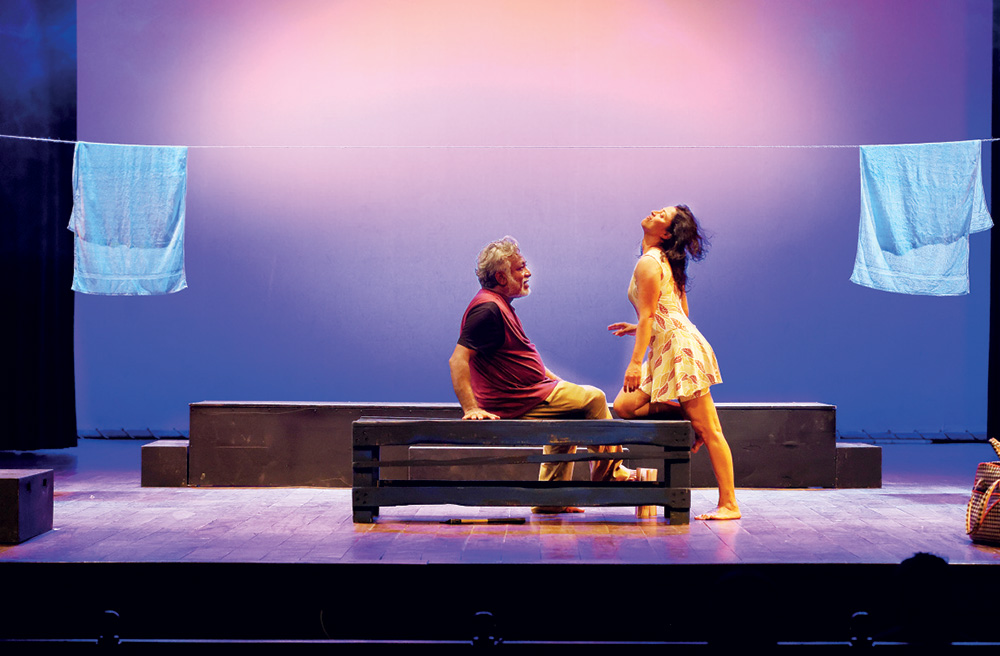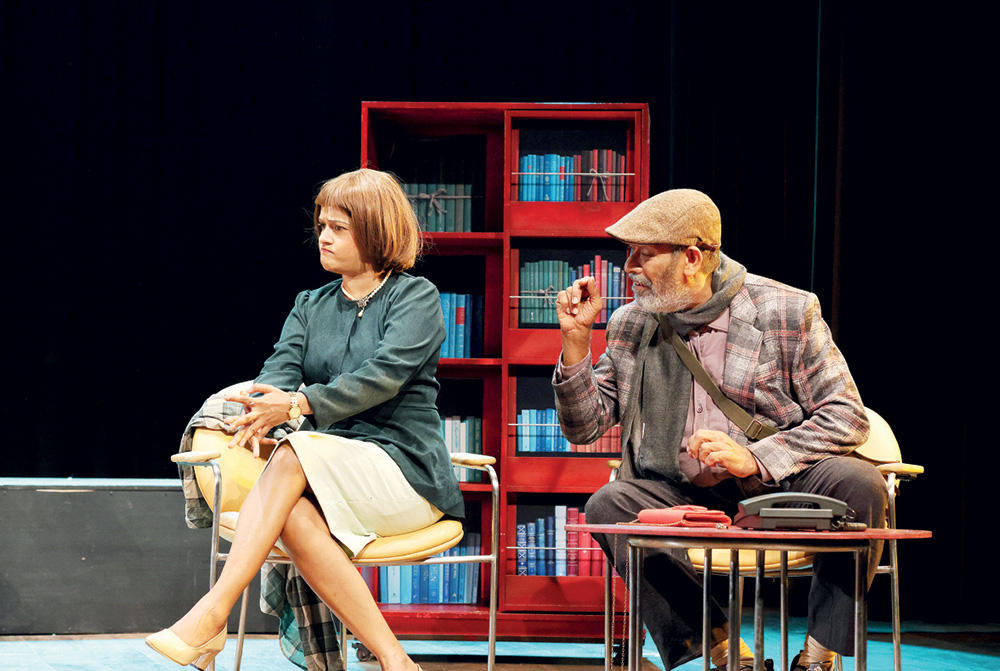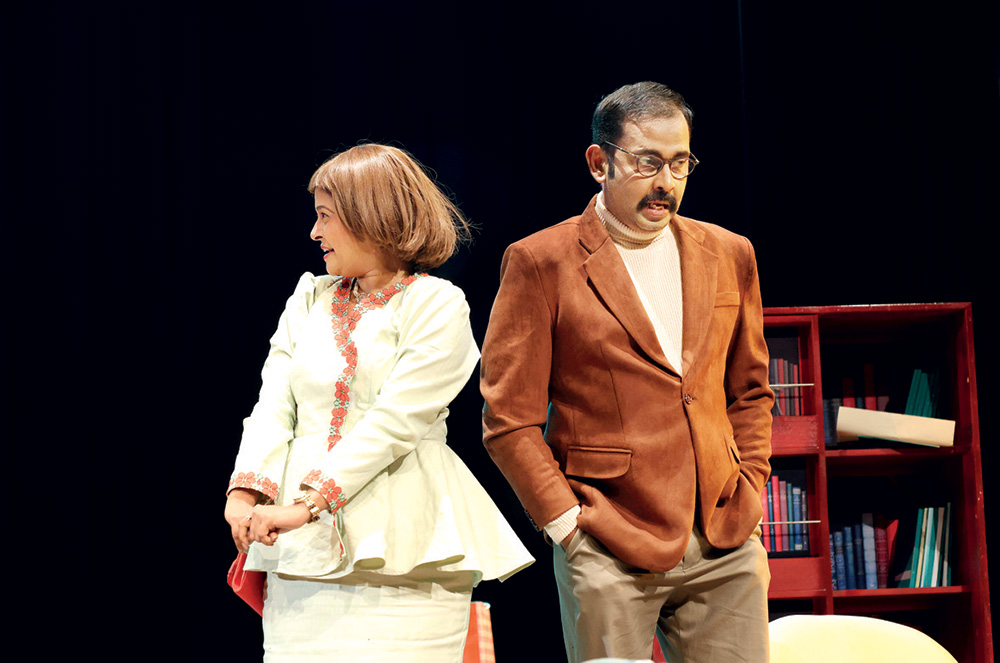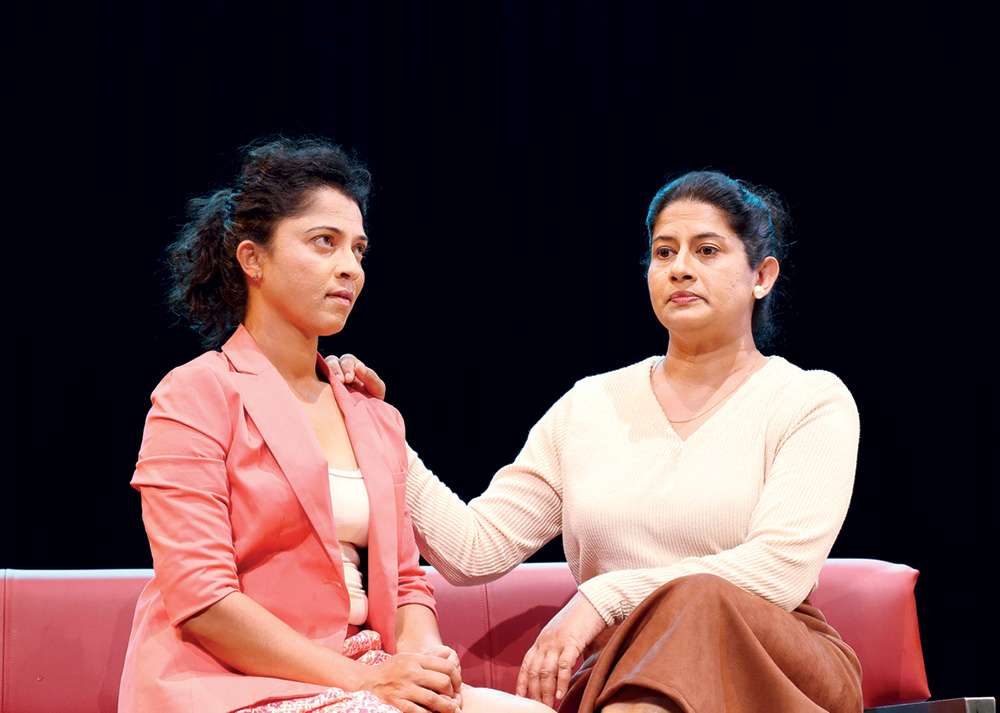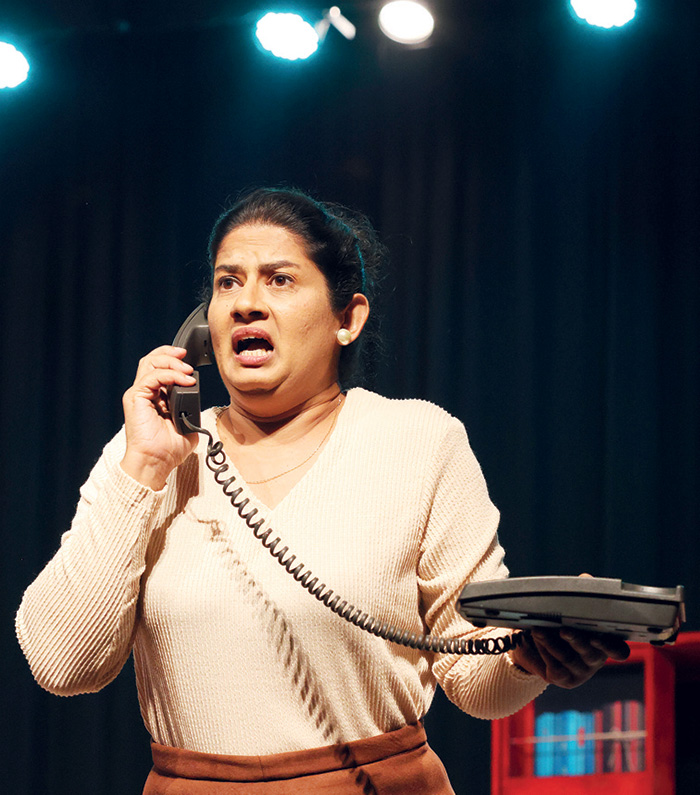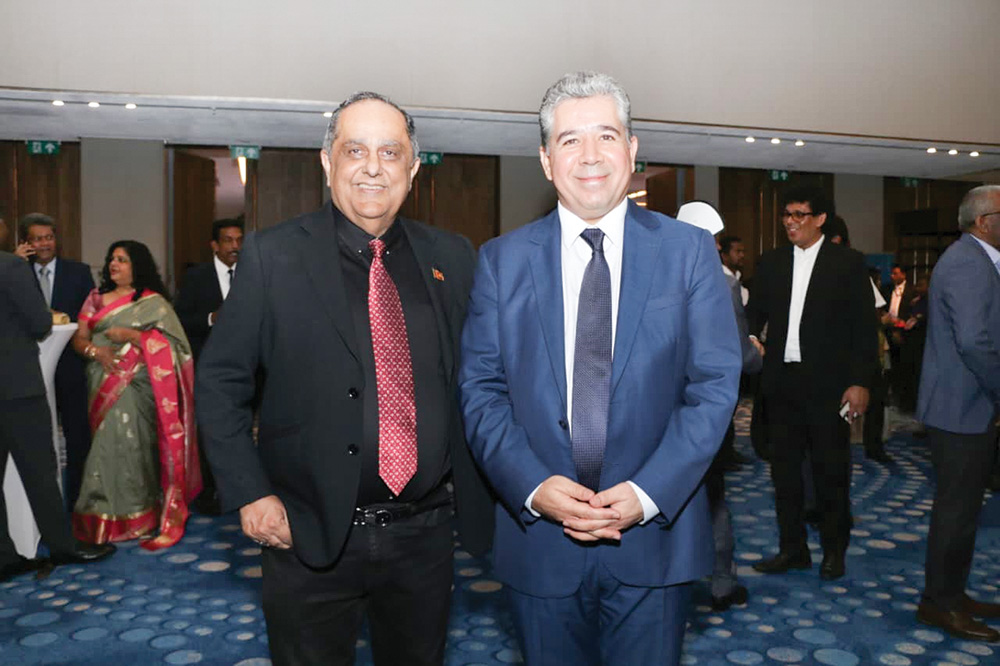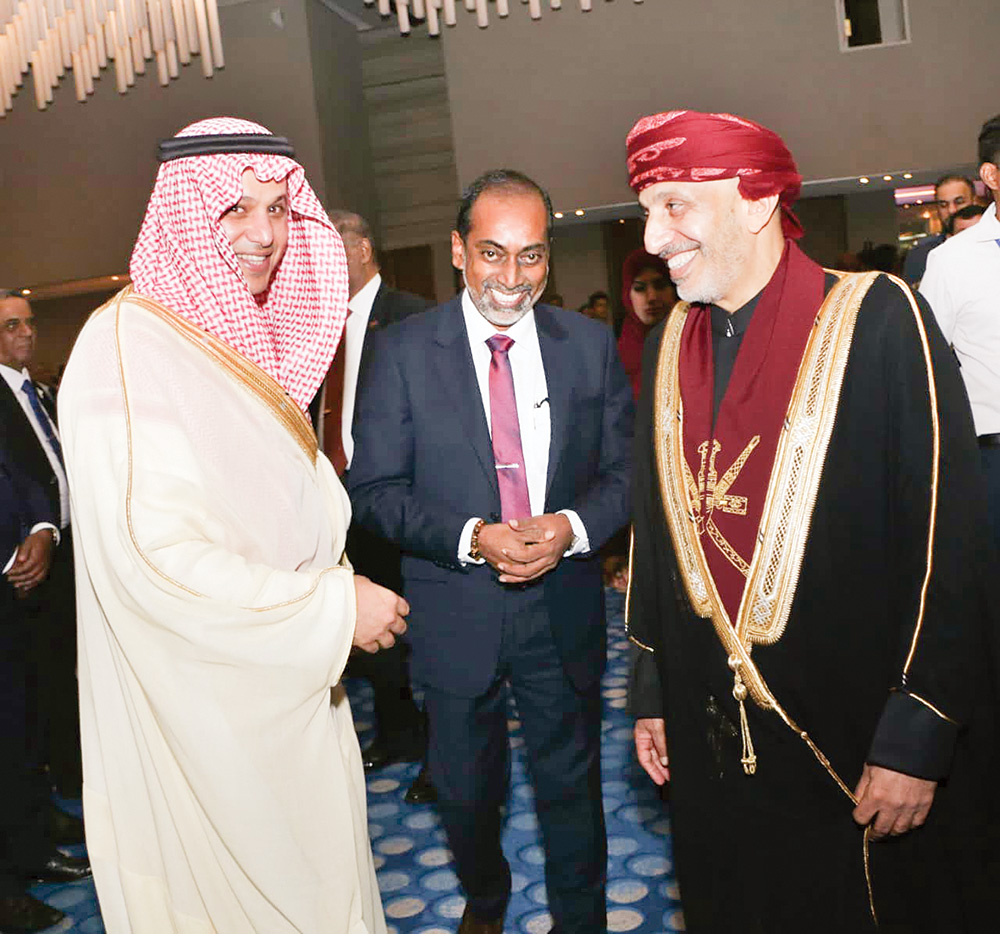Life style
The first ever social club in ceylon and the life of H.A Marshall-its builder
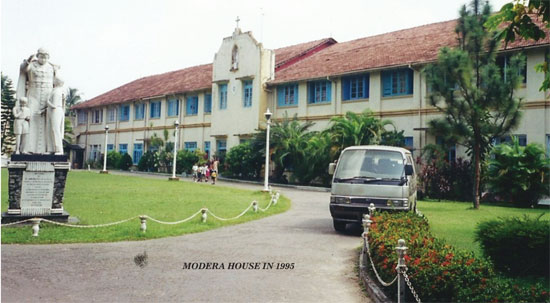
Whist bungalow
by Hugh Karunanayake
When the Portuguese and Dutch occupied the maritime provinces of Ceylon from the 16 th Century to the end of the 18th century, it was more or less a military occupation with the ever present danger of the coastal government being overrun by the monarch who ruled the Kandyan Kingdom. That imminent possibility was mitigated to some degree with the annexation of the maritime provinces by the British East India Co; which occurred during the wars of the French revolution. When the Netherlands came under French control the British made its move to oust the Dutch from Ceylon. The Dutch surrendered the island(or more precisely its maritime areas) to the British in 1796 after some half hearted resistance. In 1802 Ceylon was made a crown colony and it was clear that the British were here to stay. In 1815 the Kandyan Kingdom capitulated to the British through a combination of intrigue, and disaffection in the King’s court rather than military engagement. The doors of the country were now open for British settlement and to exploit the nation’s resources to the advantage of the Metropolitan power.
With Ceylon functioning as a British colony, the stage was set for its administration through a Governor appointed by the monarch in Britain. The administration was done through a Civil Service established by the government and by a legal system largely based on Roman Dutch Law supplemented by laws and customs of the local population. Governor Frederick North arrived in the island on 12 October 1798 accompanied by 9 officials who were to administer the island. Among them were three “officers” Sylvester Gordon, Robert Barry, and George Lusignan, each of them just thirteen years of age!! ( Gives some indication of the confidence of the Brits who thought that even teenagers could keep the”natives” in check) There was also in the group,Henry Augustus Marshall who was appointed First Clerk of the Civil Department which was the precursor to the Treasury. Marshall educated at Charterhouse and Oxford was reputed to be the best classics scholar in the island during his stay. He married the daughter of Colonel Robert Brooke Governor of the Island of St Helena. Mrs Marshall was apparently a wealthy woman as suggested by Governor North commenting on Marshall as “married comfortably”.Mr and Mrs Marshall are said to have been very popular socially and JP Lewis the colonial recorder and historian believed that she was the guardian of the tree referred to on the inscription on the stone tablet seen to this day next to the Wellawatte Bridge on Galle Road. Others have suugested that the Sophia referred to in the inscription is none other than Lady Brownrigg.
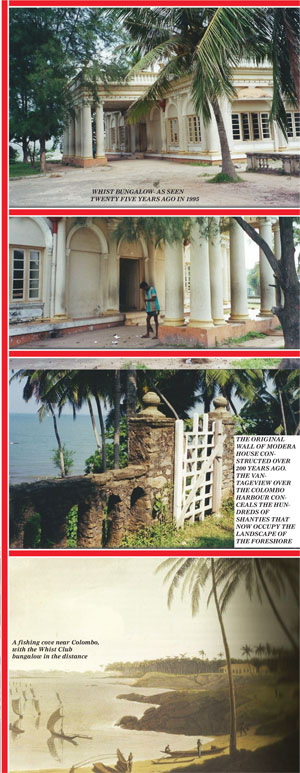 At the time of British rule of the maritime provinces of Ceylon during late 18 th Century, it was the Galle Harbour that was the main point of entry to the island. The Colombo harbour was a tranquil bay used by fishing craft. The areas overlooking the bay of Colombo in the Mutwal area soon became elite residential areas, replacing the Fort and Pettah areas populated by the Dutch. The early British administrators were quick to acquire choice sites for their homes, the best of them overlooking the bay of Colombo. Many stately homes were constructed in the Mutwal, Modera areas. They included the Whist Bungalow, Modera House, Uplands, Elie House, Rock House, all of them located on vantage points overlooking the bay of Colombo. Three of the stately homes, Rock House, Whist Bungalow, and Modera House were built by Henry Augustus Marshall, the Civil Servant, in his private capacity.
At the time of British rule of the maritime provinces of Ceylon during late 18 th Century, it was the Galle Harbour that was the main point of entry to the island. The Colombo harbour was a tranquil bay used by fishing craft. The areas overlooking the bay of Colombo in the Mutwal area soon became elite residential areas, replacing the Fort and Pettah areas populated by the Dutch. The early British administrators were quick to acquire choice sites for their homes, the best of them overlooking the bay of Colombo. Many stately homes were constructed in the Mutwal, Modera areas. They included the Whist Bungalow, Modera House, Uplands, Elie House, Rock House, all of them located on vantage points overlooking the bay of Colombo. Three of the stately homes, Rock House, Whist Bungalow, and Modera House were built by Henry Augustus Marshall, the Civil Servant, in his private capacity.
Rev James Cordiner was appointed Chaplain to the 51 st Foot Regiment in Ceylon at the request of Governor Norh. A man of learning and of perceptive observation Rev Cordiner did a tour round the Island in 1800, which led him to publishing in 1807 one of the earliest English descriptions of the island in a two volume publication titled “A description of Ceylon, with narratives of aTour round the Island in 1800, the expedition to Kandy in 1803, and a visit to Ramessaram in 1804”.
Cordiner observed that “The English society at Colombo is uncommonly pleasant; and an assemblage of so many excellent characters is, certainly rarely to be found. The men at the head of the civil and military departments are particularly amiable: and all ranks live together in a mutual exchange of the most friendly and familiar intercourse….” And “Two weekly clubs which have been established at Colombo for several years past, contribute eminently to the promotion of social pleasures in the settlement. The elder is the Cocoa-nut, or Whist Club, at which the principal amusement is cards. The bungaloe where it is held, is beautifully situated, about four miles north east of Colombo.at the mouth of the Calany-ganga, which there receives the name of Mootwal. The club consists of twelve members, chosen from among the most respectable inhabitants of the place. They give dinners in rotation, and generally invite twelve strangers. Some of the members whose characters are celebrated for extensive hospitality, assemble a still greater number of guests. The entertainment is always liberal, and the assembly never fails to be animated with the highest share of convivial delight.The company repair to the villa about one o’clock in the afternoon, and play cards, read or otherwise enjoy the country, until four when dinner is announced. At half past five, or six o’clock, they rise from the table, make a circuit in their carriages or on horseback, and reach their respective homes before dark.”
What a glorious life the British pioneers would have lived. Little wonder that the aspiring”natives” modelled themselves on the social features of the life of the Brits. The creation of the Whist Club underscored the need for expatriate personnel to engage in social interaction. There were many other venerable institutions to follow in later years like the Colombo Club, Kandy Club, Hill Club all of which offered residential facilities. They were however not open to the local population, who not to be outdone formed their own Orient Club (a natives only residential club). Ethno specific sports clubs followed, and are there to this day eschewing some of the rigid ethno specific admission rules insisted upon at the beginning. Clubs were the order of the day during the nineteenth and twentieth centuries, and the more exclusive the membership the higher the social status that exclusivity conferred! The rise of the new breed of hostelry “the Five Star Hotel” seems to have put paid to all those status symbols and hallmarks of privilege.!
While it is on record that Marshall constructed Whist Bungalow, Modera House, and Rock House there is no evidence to suggest that he ever lived in any of them. The history of occupancy of Whist Bungalow is on the public record. On the closure of the Coca- nut Club, Whist Bungalow was acquired by Sir Richard Morgan, Supreme Court Judge. It was inherited by his son who died suddenly and it was then under the ownership of Mr Louis Peiris and his wife Selina who lived there for many years. The house was featured in the encylopaedic “Twentieth Century Impressions of Ceylon” published in 1907, when it was occupied by the Pieris family. The Famed German Naturalist Ernet Haeckel who visited Ceylon in the 1880s resided in Whist Bungalow and wrote wistfully about his life there in his book “A visit to Ceylon”. The ownership of the house appeared to have changed several times, once even used as a tea store!. The house is presently managed by the National Housing Development authority as a community hall.
The first ever socia…
Members of CSA would be interested to know that the forbears of two senior membesr of the Society once owned Whist Bungalow. Maureen Henricus nee Morgan is a direct descendant of Sir Richard Morgan, while Chandra Senaratne’s maternal grandmother was Mrs Selina Peiris!
Modera House the other creation of Marshall was occupied by the Armitage family, the leading coffee exporters from Ceylon in the nineteenth century. The coffee crash seriously affected the fortunes of the Armitages who sold Modera House to the De La Salle Brothers in the 1880s and moved to Alexandra House, Alexandra Place. The house was later the premises of Alexandra College. Modera House was the location of the film “Elephant Walk” a classic movie of the 1950s. It is now a school run by the De La Salle brothers. “Rock House” built by Marshall was acquired by the government and is Army property for the past over fifty years.
Mr and Mrs Marshall were a popular couple socially. Lieut -Col Campbell in his two volume book “Excursions, adventures, and Field sports in Ceylon” published in 1843 had this to say of the Marshalls ” A gentleman and his lady upon whose hospitality and friendship I had little or no claim, most kindly received me into their charming abode, situated on the sea shore about three miles from Colombo, and it is to the care and attention of Mr and Mrs Marshall that I attribute my temporary recovery.” Famed colonial recorder and writer J Penry Lewis believed that the Marshalls lived near the old toll gate which was in existence at Wellawatte near the bridge over the canal. There was a large banian tree under which a stone tablet was installed praising the virtues of a lady named Sophia. While Mrs Marshall carried her first name as Sophia, it has been suggested that there was another Sophia- viz Lady Sophia Brownrigg the Governor’s wife.
While that riddle remains to be solved, we have to this day the stone tablet with the inscription. It was lying near the entrance to the bicycle shed of the Savoy Cinema, but since has been erected upright near the bridge. Our former President of the Colombo Chapter Somasiri Devendra published a well researched article in his usual scholarly style, which appeared under the title “Wellawatte Inscriptions” in The Ceylankan #9 of Feb 2000. The “younger” club that existed during Marshall’s time, the “Quoit Club” was according to Cordiner situated in an opposite direction to Whist Bungalow, about two miles south of Colombo on the road leading to Point De Galle. Is it possible that Marshall built the Quoit Club as well and also resided there? Could Cordiner have misjudged the distance from Colombo of the Quoit Club ? If such is the case there is more certainty to the speculation that the Wellawatte tablet refers to none other than Sophia Marshall. We are still however lingering in the realm of conjecture !
Henry Augustus Marshall died on 23 January 1841 in his 64 th year and was buried in the old Galle Face Cemetery. A tablet was erected in St Peter’s Church,Fort by his widow and two son “in memory of an elegant classical scholar and a sincere Christian.
Colombo of the eighteenth century was a tranquil place, rich in vegetation, and serene in outlook. It was James Cordiner who observed that: “Nothing about Colombo is more apt to excite admiration than the flourishing state of the vegetable world. So much beauty and variety are in few countries equalled, and nowhere excelled”. Is it a forlorn wish to hope for a revival of Colombo’s lost beauty ? Only time will tell !!
Life style
Upali returns with Sinhala adaptation of Murdoch classic
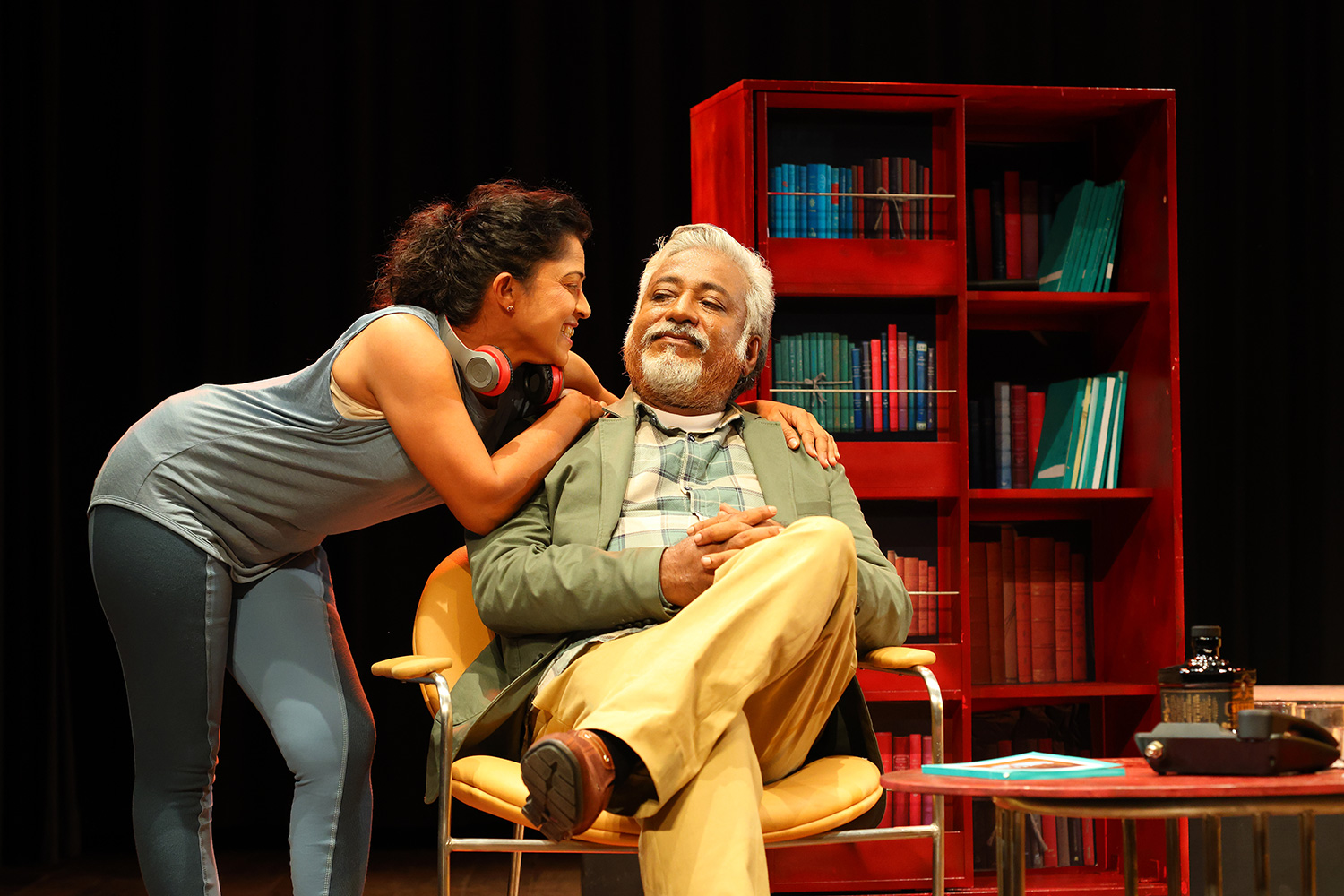
EMD Upali, a familiar name in both the Colombo Bar and the Sinhala stage, is gearing up to unveil his latest theatrical venture, Pavul Kana Minihek, the Sinhala adaptation of Iris Murdoch’s acclaimed novel The Black Prince. The play goes on board on December 6 at 7 pm at the open-air theatre of the Sudarshi Hall, Colombo.
Though not physically tall, he stands tall in fame. Upali’s open, friendly nature and ever-present smile make him a respected figure in both legal and theatrical circles. The veteran director is also remembered for introducing the late Jackson Anthony to the stage through his 1983 hit Methanin Maruwenu, a production that went on to win national acclaim.
But his journey began much earlier. As an undergraduate at the University of Colombo, he created Methanin Maruwenu for an inter-faculty drama competition in 1981 and walked away with the Best Director award. The reworked version won him another Best Director title at the 1983 State Drama Festival. Two years later, he repeated the feat with Piyambana Assaya.
Academic commitments kept him away from the stage until 1995, when he returned with Eva Balawa, a Sinhala adaptation of J.B. Priestley’s An Inspector Calls.
“Lucien de Zoysa first staged the English version at the Lionel Wendt in memory of his son Richard,” Upali recalls. “I adapted it into Sinhala using the script by my guru and friend, Upali Attanayake. Eva Balawa went on to win four State Awards, including Best Director (Adaptation).”
He followed this success with Chara Purusha (2000), adapted from Gogol’s The Government Inspector; Wana Tharavi, his staging of Ibsen’s The Wild Duck during the Ibsen Centenary celebrations; and Chekhov’s The Cherry Orchard as Idamedi Wikine in 2014.
Pavul Kana Minihek is Murdoch’s philosophical and psychologically charged masterwork, adapted from Prof. J.A.P. Jayasinghe’s Sinhala translation. Produced by Jude Srimal, the play features Sampath Perera as Bradley Pearson alongside theatre stalwarts Lakshman Mendis, Nilmini Sigera, Madani Malwage, Jayanath Bandara, Mihiri Priyangani and Chanu Disanayake. Music is by Theja Buddika Rodrigo.
Behind the curtain sits an equally seasoned crew: production designer Pradeep Chandrasiri, costume designer Ama Wijesekara, lighting designer Ranga Kariyawasam, make-up artist Sumedha Hewavitharana and stage manager Lakmal Ranaraja.
Murdoch’s philosophical depth, Upali notes, is central to both the novel and the play.
“Murdoch’s background in philosophy flows through the narrative,” he says. “The Black Prince grapples with the pursuit of truth, through erotic love, through art, through suffering. She was a Platonist, and that worldview shapes the protagonist Bradley Pearson’s journey.”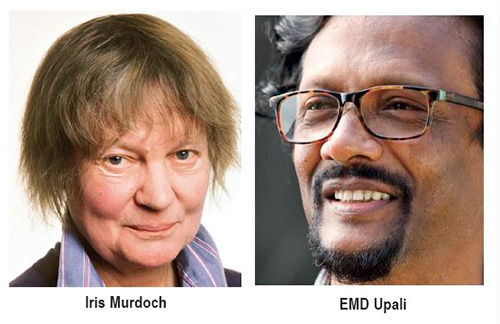
Murdoch’s novel, published in 1973, won the James Tait Black Memorial Prize and was shortlisted for the Booker Prize before being adapted for the stage in 1989.
“We condensed the play into a sharp, two-hour production,” Upali says. “With Pradeep Chandrasiri’s design, we recreated both Bradley’s and Arnold Baffin’s homes on stage. Our approach was minimalistic, but every decision was grounded in careful experimentation.”
Upali is candid about the realities surrounding Sinhala theatre especially when adapting world-class works.
“The biggest challenge is funding,” he says. “A proper production costs at least five million rupees. Institutions like the British Council or Goethe-Institut help occasionally, but not enough.”
He points to recent successes such as Nuga Gahak, Kanchuka Dharmasena’s Sinhala adaptation of Tim Crouch’s The Oak Tree, staged with the help of the British Council, and Rajitha Dissanayake’s Ape Gedarata Gini Thiyaida, supported by the Sunera Foundation.
“We must be happy some people get sponsorships. It’s rare. But if we create good theatre, audiences still come.”
The director laments Sri Lanka’s lack of proper theatrical infrastructure.
“In Sri Lanka, theatre is treated as a ahikuntika kalawa, a gypsy art,” he says. “Actors and crew load a bus with props, travel, perform once and return. In developed countries, theatres run the same play for months, sometimes years.”
Venues remain limited and expensive. Lionel Wendt is booked out months ahead; most other halls lack even basic acoustics.
“Many places are just meeting halls. Audiences beyond the middle rows can’t hear the actors. These shortcomings drain the cultural life of the nation.”
With auditorium rentals running between Rs. 75,000 and Rs. 100,000 a day, directors often wait months for dates.
“A play must be staged at least once a month to stay alive,” he remarks. “Theatre isn’t something you can store on a chip.”
Sri Lanka also lacks full-time theatre companies. “Our actors must juggle movies, teledramas, TV ads, political stages, news anchoring — everything,” Upali notes. “They have to. There’s no other income.”
Hiring them for a single performance can cost Rs. 300,000. Full production ranges from Rs. 2 million to Rs. 5 million.
“When we began, even films didn’t cost this much.”
Meanwhile, audiences are shrinking. “We are living in a TikTok world,” he says with a wry smile. “People want instant gratification. Sitting through a two-hour play is becoming harder and harder.”
Yet despite the odds, Upali remains committed to the stage and to bringing global literature to Sinhala audiences.
“I believe in theatre,” he says simply. “And I believe our audiences still care, even in a distracted world.”
Pavul Kana Minihek
opens this week and promises to remind us of that serious theatre still has a place, and a voice, in Sri Lanka.
(Pix by Hemantha Chandrasiri)
Life style
Celebrating Oman National Day
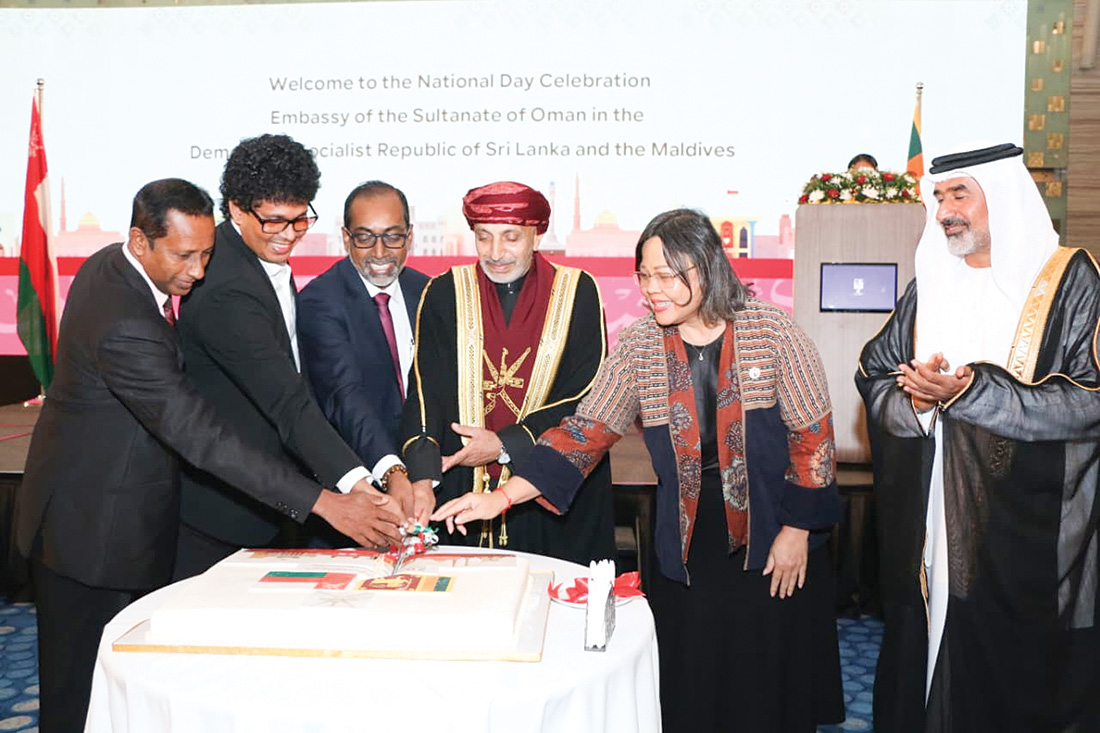
The celebration of the National Day of the Sultanate of Oman unfolded with distinguished elegance, as diplomats, dignitaries and invited guests gathered to honour the rich heritage and modern achievements of the Sultanate of Oman, under the leadership of Sultan Hatham bin Tarik.
The Ambassador of Oman in Sri Lanka Ahamed Ali Said Al Rashdi delivered a gracious and heart-felt address reflecting on the deep-rooted ties between Sri Lanka and the Sultanate of Oman.
He spoke of the region’s shared maritime history, centuries of cultural exchanges and the growing partnerships that continue to strengthen bilateral friendships between Sri Lanka and with the Sultanate of Oman.
- Former Foreign Minister Al Sabry with other guests
- The Ambassador of Turkiye Semih Lutfu Turgot with Governor of Western province Hanif Yusuf
- Gracious welcome from the Ambassador of Oman, Ahamad Ali Said Al Rashid
The Ambassador also highlighted Oman’s progress under the visionary leadership of the Sultanate, celebrating the nation’s advances in economic and regional co-operation, values that align closely with Sri Lanka’s aspirations.
One of the evening’s best highlights was the culinary journey, specially curated to offer guests an authentic taste of Omani hospitality.
The buffet unfolded a tapestry of flavours, fragrant Omani biryani, slow cooked meats, grilled seafood and an array of vibrant desserts like delicacies especially Omani dates, offering a sweet finale while the aroma of Omani coffee lingered like a gentle cultural embrace.
It was an evening that did far more than celebrate a National Day. It unfolded as a journey into the soul of Oman, wrapped in sophistication and unforgettable charm.
The glamour of the evening was heightened by the graceful flow of distinguished guests in elegant allure, warm diplomatic exchanges and the subtle rhythm of traditional Omani melody.
Life style
Under a canopy of glamour

Rainco’s touch of couture
It was a dazzling evening that merged fashion, function and fine design, as Rainco Sri Lanka’s homegrown brand synonymous with quality and craftsmanship – unveiled its new umbrella collection ‘Be my Rainco’ at Cinnamon Life setting a new standard for stylish innovation.
This event graced by a distinguished guest list of fashion connoisseurs, influencers and design enthusiasts was more than a product launch. It was a celebration of form and artistry. The highlight of the evening was a fashion showcase curated by acclaimed designer Brian Kerkovan who brought his international flair to Rainco’s refined aesthetic. Models glided down the runaway carrying striking umbrellas, their balanced elegance and engineering transforming a daily essential into statement of luxury.
Bathed in soft lighting and accompanied by an evocative musical score, the ambience exuded sophistication. The collection crafted with meticulous attention in detail, featured bold silhouettes, luxe finished and innovative textures, echoing the brand’s philosophy of merging practicality with panache.
Speaking at the launch, Rainco’s General Manager marketing and innovation, Awarna Ventures (Ltd)Gayani Gunawardena said with pride his milestone collaboration, noting how the brand’s evolution from a household essential to a symbol of contemporary lifestyle.
The evening concluded with a toast to creativity – a fitting finale for a brand that continues to inspire confidence and styles ,rain or sunshine.
(ZC)
-

 News5 days ago
News5 days agoWeather disasters: Sri Lanka flooded by policy blunders, weak enforcement and environmental crime – Climate Expert
-

 Latest News6 days ago
Latest News6 days agoLevel I landslide RED warnings issued to the districts of Badulla, Colombo, Gampaha, Kalutara, Kandy, Kegalle, Kurnegala, Natale, Monaragala, Nuwara Eliya and Ratnapura
-

 Latest News6 days ago
Latest News6 days agoINS VIKRANT deploys helicopters for disaster relief operations
-
News2 days ago
Lunuwila tragedy not caused by those videoing Bell 212: SLAF
-

 Latest News6 days ago
Latest News6 days agoDepartment of Irrigation issues Critical flood warning to the Kelani river basin
-
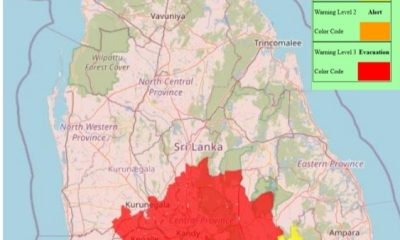
 Latest News4 days ago
Latest News4 days agoLevel III landslide early warnings issued to the districts of Badulla, Kandy, Kegalle, Kurunegala, Matale and Nuwara-Eliya
-

 News6 days ago
News6 days agoCountry reels under worst weather in living memory
-

 Editorial6 days ago
Editorial6 days agoNeeded: Action not rhetoric



